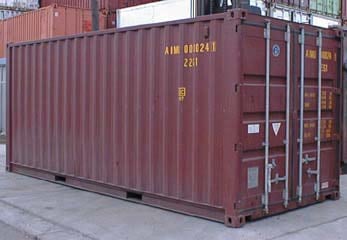AirTech wrote:n7axw wrote:It would be hard to visualize there not being shipping containers on Safehold. They wouldn't be standardized in size. There would be the type used by Nynian's shipping company which we see used to facilitate their escape from Zion. Then there would be the type designed to be lifted into the hold of a galleon by a dockside boom. For an example of the boom, visualize that cannon being hoisted onto Destiny prior to Ithyria in HFAF.
All the ingriedients are there and we know there's lots of shipping going on.
Don
Standardized boxes were a result of containerization which relied on forklifts and standardized pallets. Prior to containerization ships were stuffed with as much as they could physically hold by large crews of dock workers.
The advantage of containerization is two fold, it reduces number of waterside workers required and sealed boxes large enough to require a truck to shift, to limit pilferage (which was up to 20%). The current standard shipping container was defined by standard truck body sizes (less chassis) and contrary to popular belief there are four standard sizes - ten foot, twenty foot, thirty foot and forty foot. The twenty is the most common followed by the forty foot. The ten foot is rare and used most often by the military for munitions (the US military has their own non-standard standard (of course)) and other hazardous cargoes.
The thirty foot unit hasn't been used in forty years.
The US Military forced containerization:
"The standardised steel shipping container has its origins in the 1950s when commercial shipping operators and the United States military started developing such units.[2] Shipping owner Malcom McLean worked with engineer Keith Tantlinger to develop the modern intermodal container. The logistics method employing these was named Container Express and was abbreviated ConEx."
and
"The United States and Canada often use longer units at 48 ft (14.63 m) and 53 ft (16.15 m)."
Both quotes from the same source: http://en.wikipedia.org/wiki/Intermodal_container












 and, Mangy Fur the Smart Alick Spacecat.
and, Mangy Fur the Smart Alick Spacecat.
 Poker
Poker